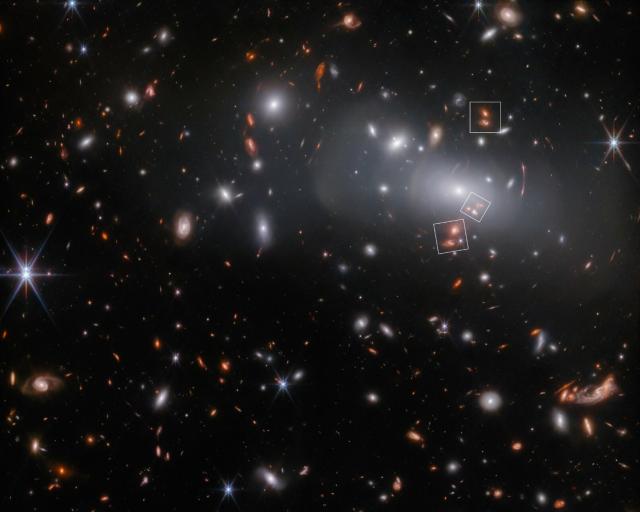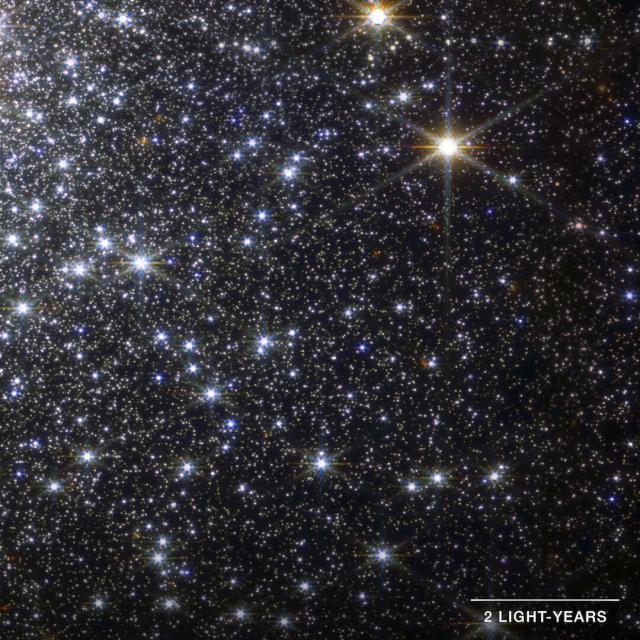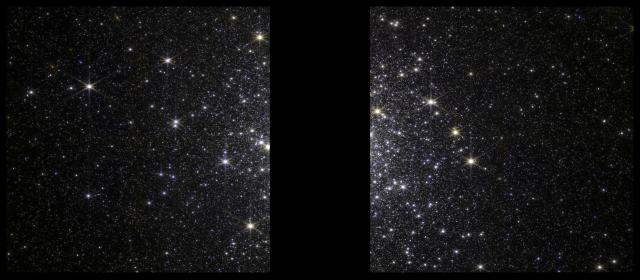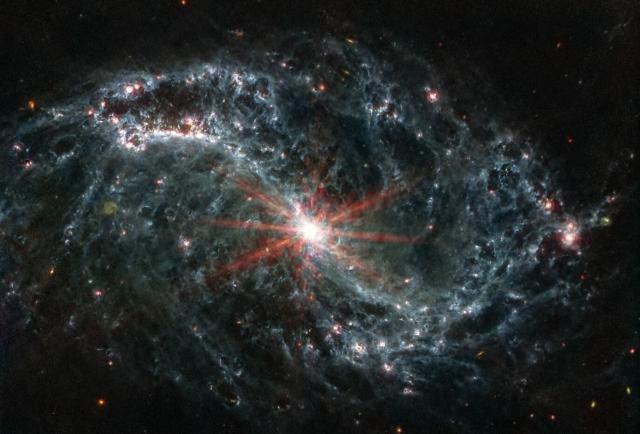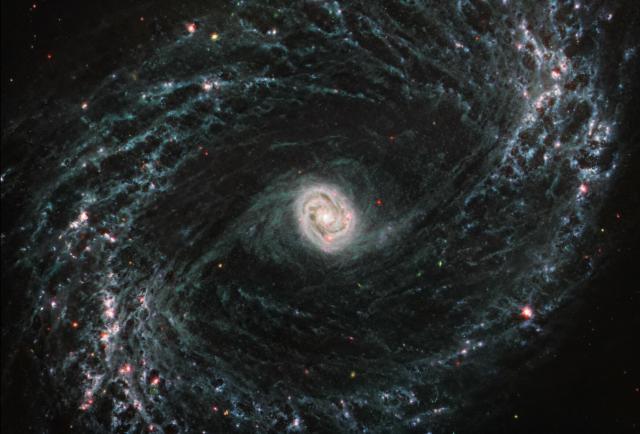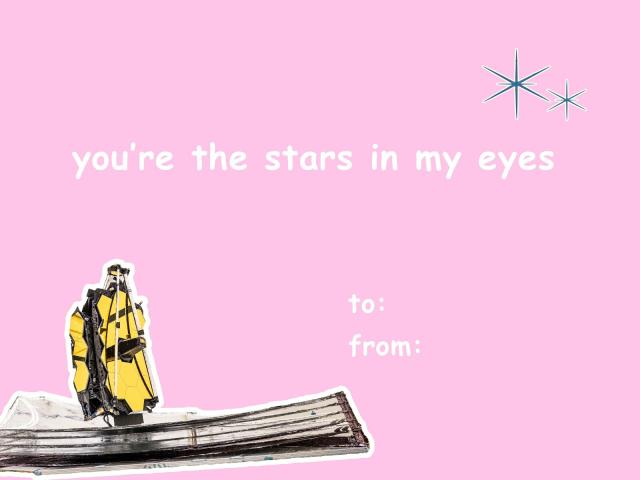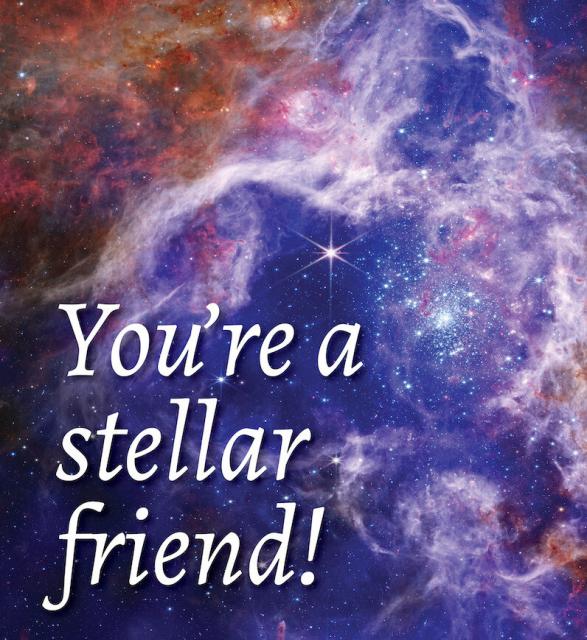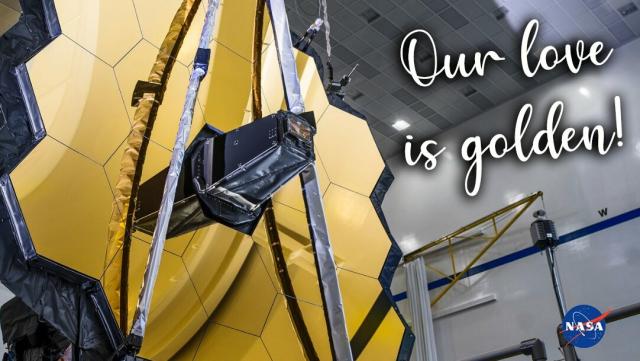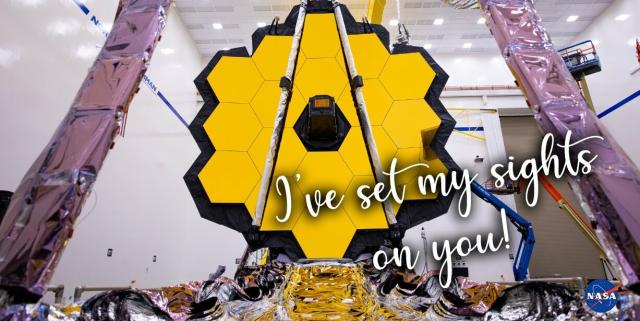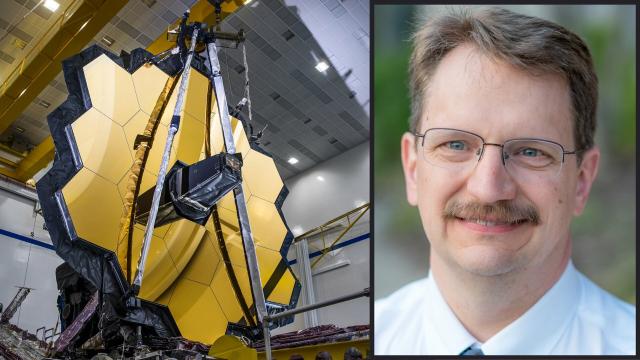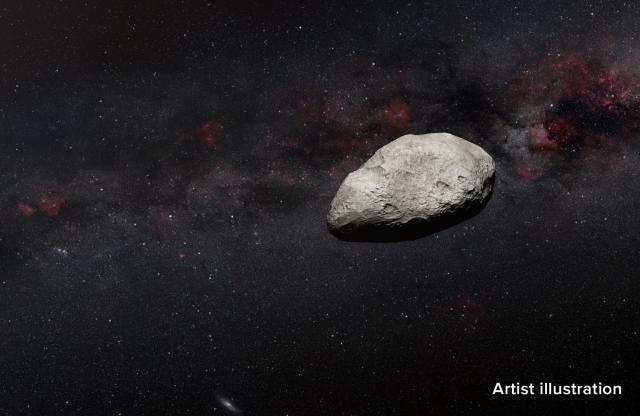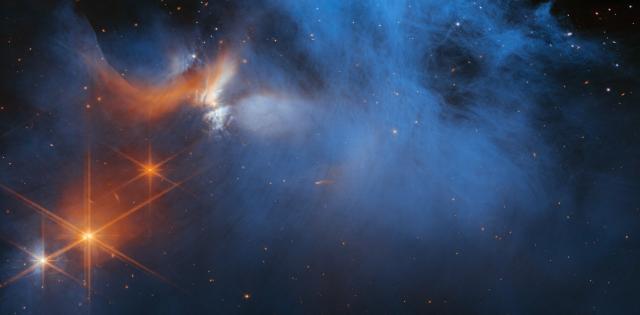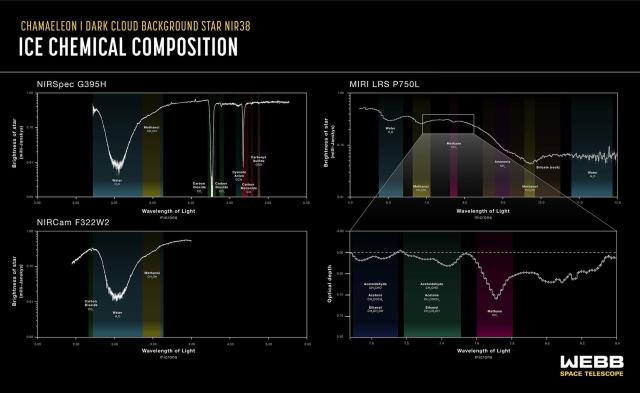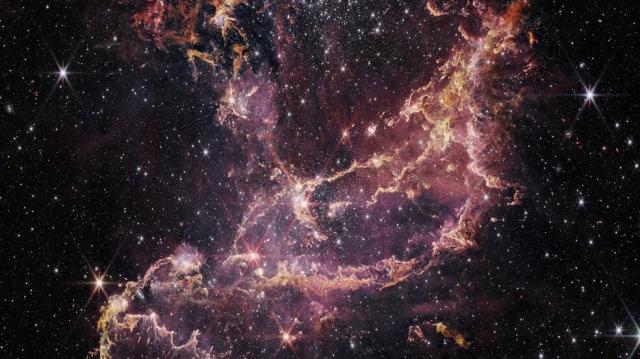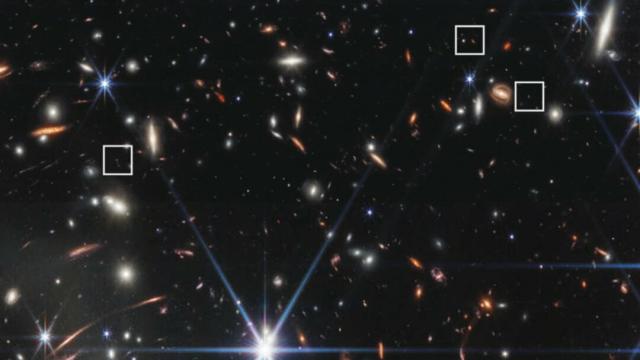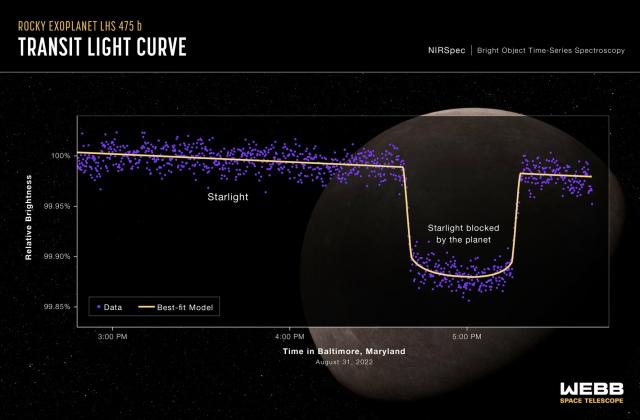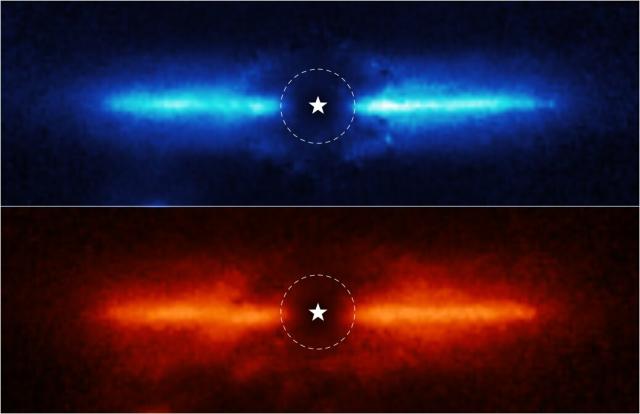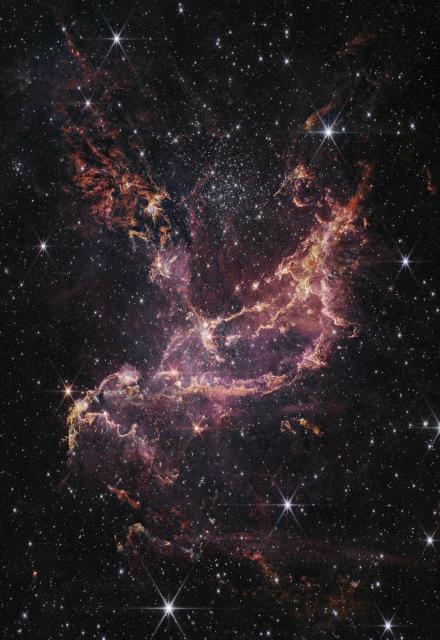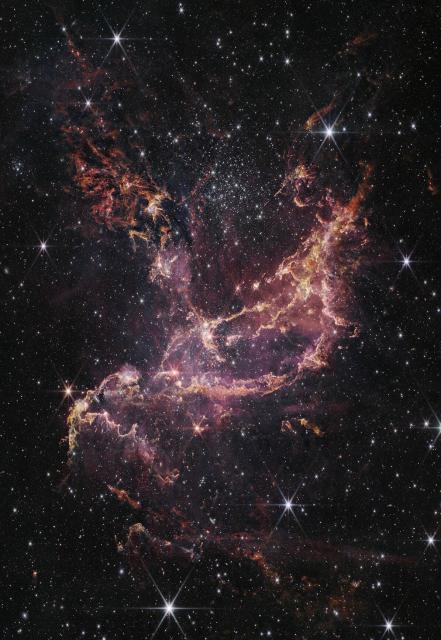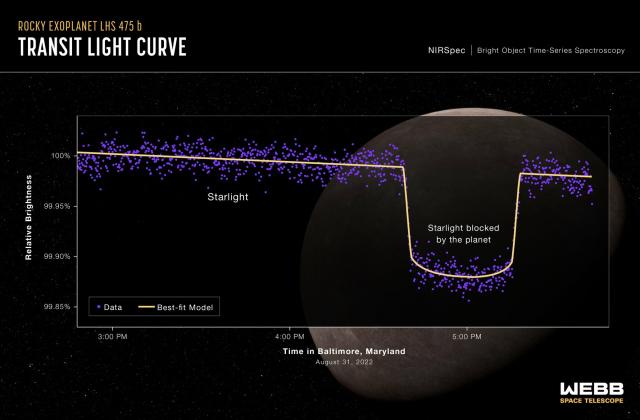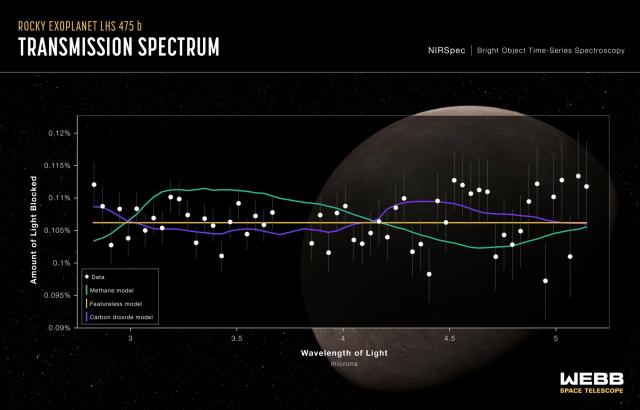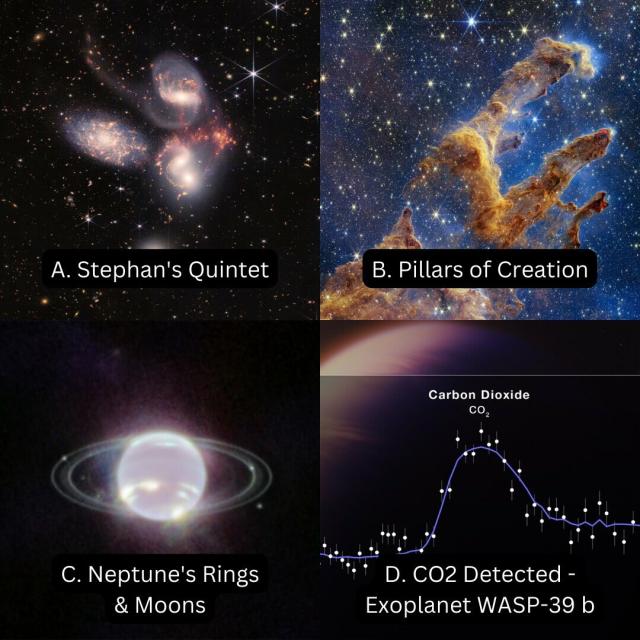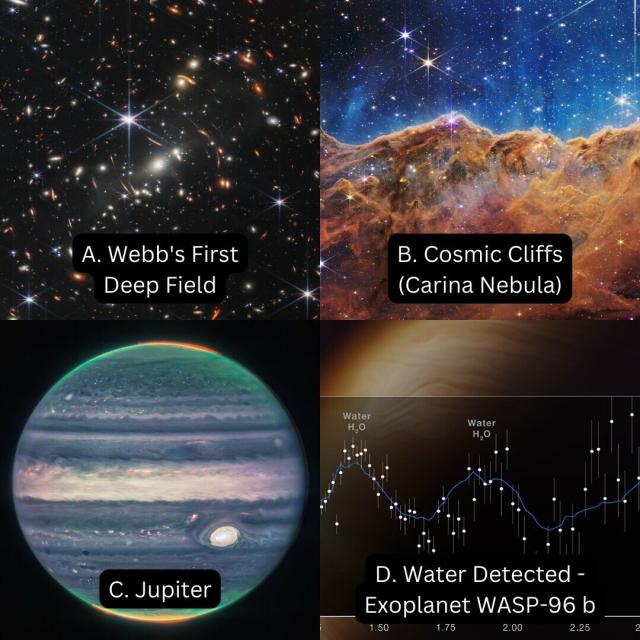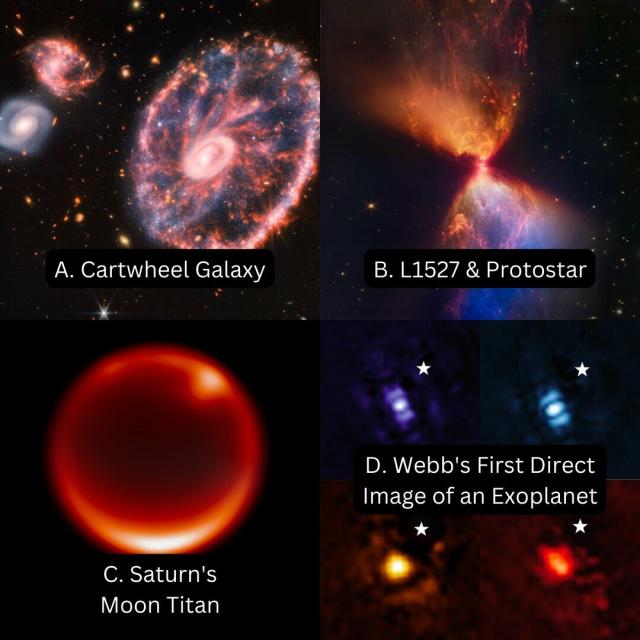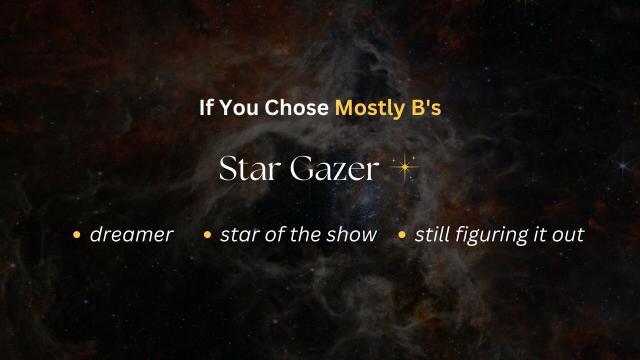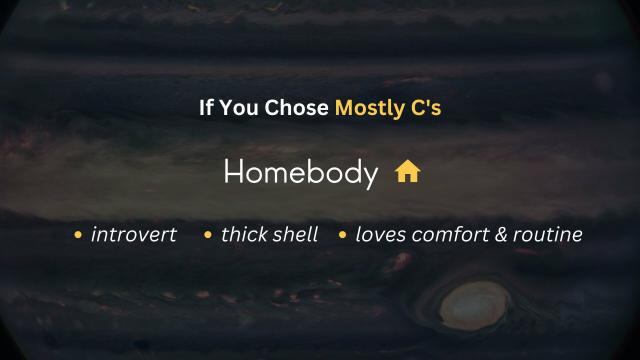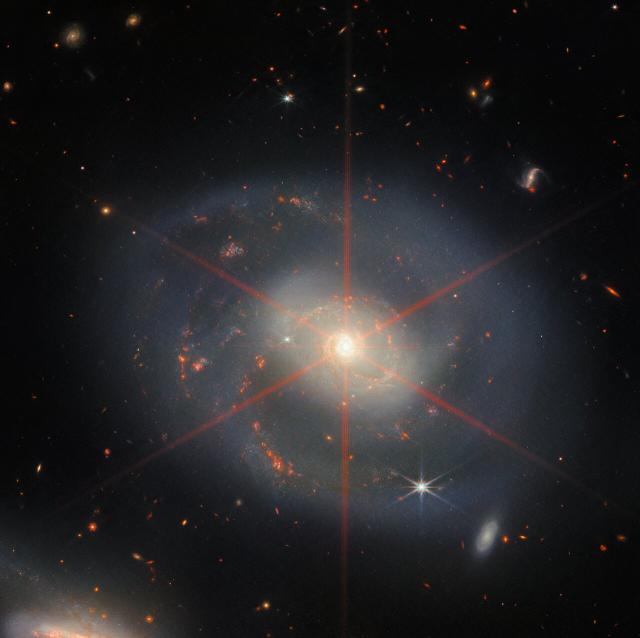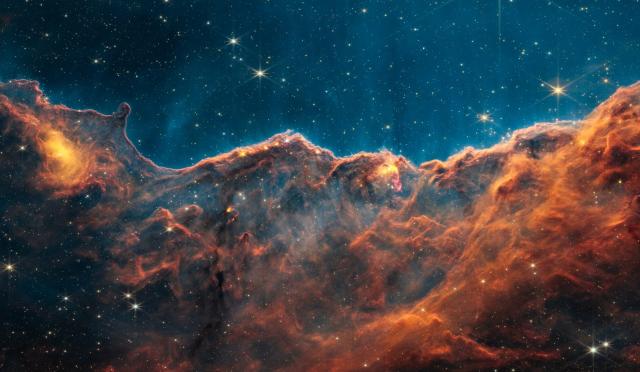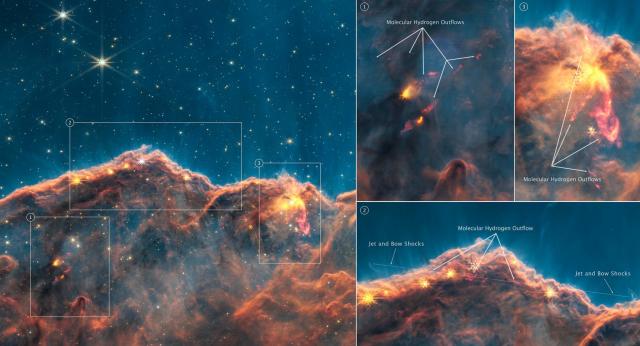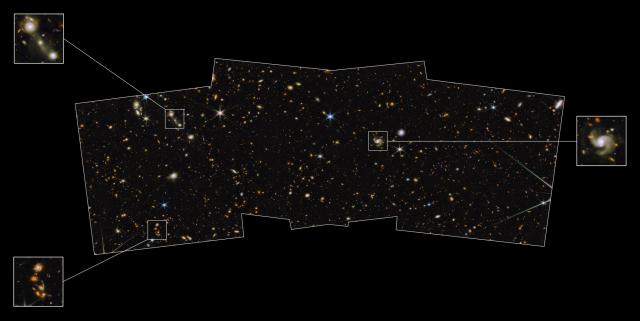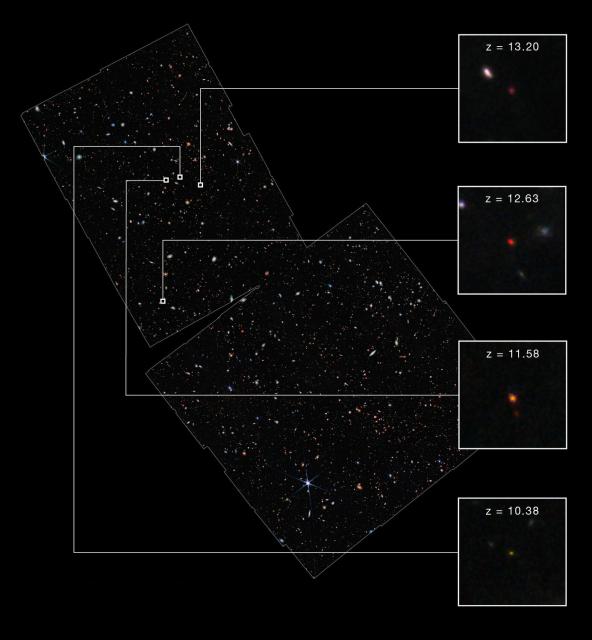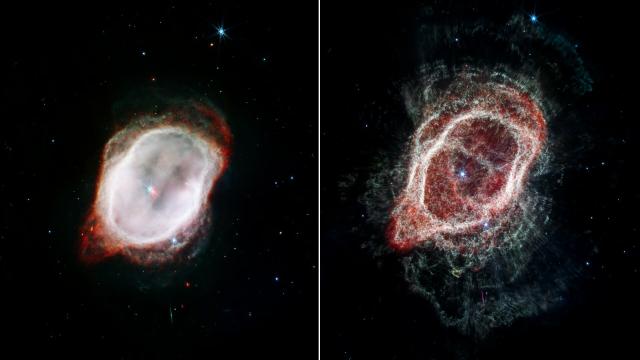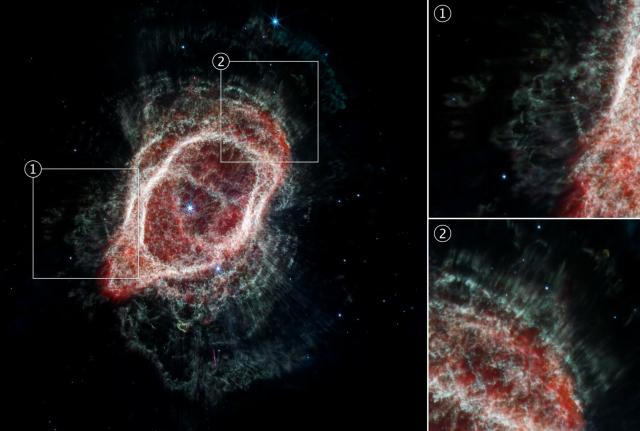Search
Items tagged with: jameswebb
This Webb image features a special galaxy that appears 3 times. Why? There's a galaxy cluster here whose mass and gravity are so great that time and space around it gets warped. This magnifies, multiplies, and distorts galaxies behind it: https://esawebb.org/images/potm2302a/
#JamesWebb
Learn more about how galaxy clusters can be natural “magnifying glasses” for distant background galaxies in this short explainer:
#JamesWebb
Shown here is M92, a cluster of thousands of stars located 27,000 light-years away in our Milky Way. One of Webb’s first science observations, this was taken as part of a program designed to help scientists make the most of Webb: https://go.nasa.gov/3ILMCMB
#JamesWebb
Shown here is M92, a cluster of thousands of stars located 27,000 light-years away in our Milky Way. One of Webb’s first science observations, this was taken as part of a program designed to help scientists make the most of Webb: https://go.nasa.gov/3ILMCMB
#JamesWebb
#JamesWebb
Webb’s images of NGC 1365 (left), NGC 7496 (top) & NGC 1433 (bottom) reveal the galaxies' networks of gas and dust in incredible detail. The data is part of an ongoing Webb survey of 19 spiral galaxies: https://go.nasa.gov/3YzvAXj
#JamesWebb
NASA’s Webb Reveals Networks of Gas and Dust in Nearby Galaxies
Researchers using NASA’s James Webb Space Telescope are getting their first look at star formation, gas, and dust in nearby galaxies with unprecedented resolution at infrared wavelengths.Jamie Adkins (NASA)
#JamesWebb
NASA Scientist Jonathan Gardner Named AAS 2023 Fellow
Jonathan Gardner of NASA’s Goddard Space Flight Center in Greenbelt, Maryland, was selected as a 2023 Fellow of the American Astronomical Society (AAS) for extraordinary achievement and service.Jessica Evans (NASA)
#JamesWebb
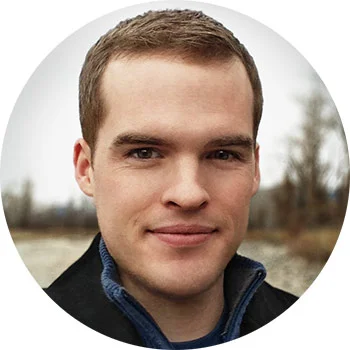
Nick Risinger
Nick Risinger is a photographer and designer living in Seattle, Washington. He is also the Co-Founder of Fifth Star Labs, makers of the iPhone and iPad app, Sky Guide.Nick Risinger
Scientists found a surprise while looking through test data from Webb’s MIRI instrument. Webb serendipitously captured an asteroid (illustrated here) just 100-200 meters in length — likely its smallest object seen yet: https://go.nasa.gov/3Yt43Xm
#JamesWebb
Webb Detects Extremely Small Main Belt Asteroid
An asteroid roughly the size of Rome’s Colosseum — between 300 to 650 feet (100 to 200 meters) in length — has been detected by an international team of European astronomers using NASA’s James Webb Space Telescope.Jamie Adkins (NASA)
The Webb team "represents the best of our humanity and an enduring pursuit to better understand the cosmos.” -NASA Administrator @SenBillNelson https://go.nasa.gov/3jflvPV
#JamesWebb

NASA’s Webb Telescope Receives Top Space Foundation Award
NASA’s James Webb Space Telescope team has been selected to receive the 2023 John L. “Jack” Swigert, Jr., Award for Space Exploration, a top award from the Space Foundation.Alise Fisher (NASA)
On this day last year, Webb successfully completed the million-mile journey to its current home base. Since then, it’s hit one home run after another — from the deepest, sharpest infrared image taken to its first rocky, Earth-size exoplanet confirmation.
#JamesWebb
#JamesWebb
In this molecular cloud (a birthplace of stars & planets), Webb scientists found a variety of icy ingredients. These frozen molecules, like carbon dioxide and methane, could go on to become building blocks of life. https://go.nasa.gov/3Xy07Vd
#JamesWebb
Webb Unveils Dark Side of Pre-stellar Ice Chemistry
An international team of astronomers using NASA’s James Webb Space Telescope has obtained an in-depth inventory of the deepest, coldest ices measured to date in a molecular cloud.Jamie Adkins (NASA)
#JamesWebb
🌌 Early "green pea" galaxies discovered
🥇 First exoplanet confirmed by Webb
📀 New infrared look at dusty disk AU Mic
...and more!
#ICYMI, catch up on Webb updates announced during the recent #AAS241 conference here: https://go.nasa.gov/3ZOcjmj
#JamesWebb
NASA Recaps Webb Telescope Findings From AAS Meeting
Scientists shared new findings and updates from NASA’s James Webb Space Telescope, also called “Webb” or “JWST,” at press conferences during the 241st meeting of the American Astronomical Society (AAS) in Seattle, from Jan. 8 to 12.Jessica Merzdorf (NASA)
To see the dusty disk around a young star, Webb blocked out starlight using a coronagraph, or mask. This is our first infrared look at the disk, made of leftover debris from planet formation. Webb offers clues into its history & make-up: https://go.nasa.gov/3vVFeqI
#JamesWebb
New Webb Image Reveals Dusty Disk Like Never Seen Before
NASA’s James Webb Space Telescope has imaged the inner workings of a dusty disk surrounding a nearby red dwarf star.Madison Arnold (NASA)
#JamesWebb
NASA’s Webb Uncovers Star Formation in Cluster’s Dusty Ribbons
NGC 346, one of the most dynamic star-forming regions in nearby galaxies, is full of mystery. Now, it is less mysterious with new findings from NASA’s James Webb Space Telescope.Jessica Merzdorf (NASA)
#JamesWebb
NASA’s Webb Uncovers Star Formation in Cluster’s Dusty Ribbons
NGC 346, one of the most dynamic star-forming regions in nearby galaxies, is full of mystery. Now, it is less mysterious with new findings from NASA’s James Webb Space Telescope.Jessica Merzdorf (NASA)
41 light-years away is the small, rocky planet LHS 475 b. At 99% of Earth’s diameter, it’s almost exactly the same size as our home world. This marks the first time researchers have used Webb to confirm an exoplanet. https://go.nasa.gov/3VY5WK1 #AAS241
#JamesWebb
NASA’s Webb Confirms Its First Exoplanet
Researchers confirmed an exoplanet, a planet that orbits another star, using NASA’s James Webb Space Telescope for the first time.Jamie Adkins (NASA)
#JamesWebb
1. Pick your favorite out of each set in this thread.
2. Keep track of your choices.
3. Find & share your result!
Let’s get started ⬇️
#JamesWebb
#JamesWebb
#JamesWebb
#JamesWebb
#JamesWebb
#JamesWebb
#JamesWebb
#JamesWebb
Tune into this holiday-themed bonus episode of @nasa’s Curious Universe podcast to hear how NASA celebrates the holidays all year! http://nasa.gov/curiousuniverse http://Nasa.gov/curiousuniverse
#JamesWebb
NASA's Curious Universe
NASA.gov brings you the latest images, videos and news from America's space agency. Get the latest updates on NASA missions, watch NASA TV live, and learn about our quest to reveal the unknown and benefit all humankind.NASA
NGC 7469 is like a cosmic wreath bursting with new stars. This galaxy is very dusty, but Webb’s infrared vision can peer through to observe features like the intense ring of star formation close around its bright center. https://esawebb.org/images/potm2212a/
#JamesWebb
We know you are all eagerly awaiting Webb's look at this system of 7 Earth-sized worlds. The telescope has observed all the planets, and preliminary results (including atmospheric properties) will be out in the new year!
#JamesWebb
For its significant contributions to science and discovery, the James Webb Space Telescope was selected for the 2022 Bloomberg Businessweek 50 – an annual unranked list of icons, leaders, and innovators.
More: https://www.nasa.gov/feature/goddard/2022/nasa-webb-telescope-selected-for-bloomberg-businessweek-s-bloomberg-50
#JamesWebb

NASA Webb Telescope Selected for Bloomberg Businessweek’s Bloomberg 50
NASA’s James Webb Space Telescope was selected for the 2022 Bloomberg 50, its annual list of icons, leaders, and innovators that have changed the global business landscape over the past year.Jamie Adkins (NASA)
Remember this view from Webb’s first images? A deep dive has revealed young stars in an elusive stage of development — and may help us investigate how stars like our Sun form: https://go.nasa.gov/3hwWOh9
#JamesWebb
NASA’s Webb Unveils Young Stars in Early Stages of Formation
Scientists taking a “deep dive” into one of Webb’s iconic first images, the Cosmic Cliffs region of the Carina Nebula, have discovered dozens of energetic jets and outflows from young stars previously hidden by dust clouds.Jamie Adkins (NASA)
#JamesWebb
This shot is just a portion of what will be the complete wide field covered by this Webb program, but it’s already unveiling galaxies in unprecedented detail and depth. The multi-wavelength image combines Webb & @NASAHubble data: https://go.nasa.gov/3W37S4D
#JamesWebb
Preliminary Webb science shows galaxies confirmed by spectroscopy to date back to less than 400 million years after the big bang. Finding and confirming early galaxies is a continuous process, and Webb is just getting started: https://go.nasa.gov/3uB4npV
#JamesWebb
Webb’s first images showed 2 stars, a dying star and its orbiting companion, in the Southern Ring Nebula. Webb scientists now think more hidden companions helped shape the gas and dust here, potentially a total of 5 stars! More: https://go.nasa.gov/3UMDo5j
#JamesWebb
NASA’s Webb Indicates Several Stars ‘Stirred Up’ Southern Ring Nebula
Some of the first data from NASA’s James Webb Space Telescope has shown there were at least two, and possibly three, more unseen stars that crafted the oblong, curvy shapes of the Southern Ring Nebula.Jamie Adkins (NASA)
#JamesWebb
